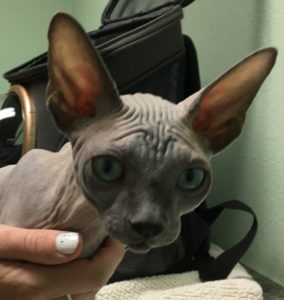
Did you know that 10-20% of the world’s human population is allergic to cats (1)? Symptoms range from itchy eyes, stuffy nose, and sneezing to skin rashes and hives. More serious reactions may include asthma and difficulty breathing. Over the counter medications can relieve some but not all of the discomfort and these medications are not without side-effects. Are there other ways to manage these allergies?
This post is an update of one published about 1 year ago. I felt it was worthwhile to bring people’s attention to the subject again.
Allergies and the cat-human bond
Allergies can come between you and your cat. You are miserable around your cat when your allergies flare up.
- You start to avoid your cat.
- He is outlawed from the bedroom.
- His needs, particularly consistent human interaction and interactive play, are not being met.
- Not only are you feeling bad, but your cat can become stressed.
- Stress can lead to medical problems such as diarrhea, and resurgence of viruses such as herpes.
- It is not unheard of for people allergic to cats to re-home their beloved pets.
The Culprit
- A protein called Fel d1 is the primary allergen in cats.
- Fel d1 causes 95% of the allergy responses in adults allergic to cats.
- Fel d1 is produced in the cat’s salivary and sebaceous glands.
- Your cat spreads Fel d1 through his fur as he grooms.
- As he sheds fur and skin (dander), Fel d1 is distributed throughout your home.
- Breathing in dander or having contact with it can trigger an allergic reaction.
Fel d1 is light, easily airborne and can be found just about everywhere, even in pet-free homes and institutions such as schools. Usually these levels are low and do not impact people in general. Fel d1 may be spread by the clothing of people who keep cats (1).
Managing Cat Allergies
REDUCING FEL D1 IN YOUR HOME
Here are some things you can do:
- Fur tends to “stick” more to fabrics – vacuum upholstery and carpets frequently.
- Consider switching out carpet for hardwood or vinyl floors.
- Use covers that you can launder on sofas and upholstered chairs.
- HEPA air filters and HEPA vacuum filters can also help.
- Clean regularly and frequently.
REDUCING FEL D1 ON YOUR CAT
Not all cats shed Fel D-1 at the same rate. Even an individual cat does not always shed the same amount of this protein at any given time – instead it varies throughout the year.
NO HYPOALLERGENIC CATS
Some folks think that certain breeds of cat don’t produce much Fel d1. These cats typically do not shed much. It is thought that the reduction in the amount of hair reduces the amount of Fel d1 in the environment.
However, Fel d1 is mainly produced in the sebaceous glands in the skin and in the cat’s saliva, not in the hair. So even a “bald” Sphynx will still groom and spread dander that has sebaceous secretions containing Fel d1 (1)
BATHING YOUR CAT
Bathing your cat does reduce the amount of Fel d1 but levels return to pre-bath amounts within 2 days (2). Of course, many cats do not tolerate being bathed. There is a mousse shampoo designed to reduce Fel d1 – this may be better accepted by cats than a traditional soap and water bath.
“NEUTRALIZING” FEL D1
Fel d1 like most allergens, has a chemical “key” that locks into receptors on cells in our bodies. What if you “lock up” Fel d1 before it gets to us?
Chickens produce antibodies against environmental antigens that they can transfer into their eggs and give their chicks immunity against these antigens. Researchers at Nestle-Purina developed an “anti-Fel d1” antibody by exposing hens to Fel d1. This antibody is incorporated into the dry cat food, Purina “Live Clear” .
How it works:
- A cat eats food containing eggs from these hens.
- The “anti-Fel d1” antibody “locks up” active Fel d1 in the cat’s saliva.
- When the cat grooms himself, he spreads the “locked up” or neutralized Fel d1 on his fur. He probably also spreads some of the “anti-Fel d1” antibody, which further neutralizes some of the allergen produced by the sebaceous glands of the skin.
- Studies show that active Fel d1 is reduced by an average of 47% after 3 weeks of feeding.
Although not a perfect solution, feeding this diet may just help reduce the allergen burden enough to make you, and consequently your cat, more comfortable.
WHAT DOES THE FUTURE HOLD FOR THOSE OF US ALLERGIC TO CATS?
HUMAN-DIRECTED THERAPIES
“Anti–Fel d 1” monoclonal antibodies are being developed that can be given by injection under the skin to humans allergic to cats. Preliminary studies showed a 60% reduction in symptoms in half of the patients. (2)
CAT-DIRECTED THERAPIES
Saiba Animal Health is developing a vaccine that triggers an immune response in the cat’s own body to develop antibodies to Fel d1. “Hypo-Cat” showed a 50% reduction in Fel d 1 levels detected in cat tear extracts, decreasing symptoms in nine allergic patients by about 30%. (2)
Other research is using CRISPR (gene-editing) technology to delete the genes responsible for producing Fel d1, with the aim of producing a truly hypo-allergenic cat. (2)
closing thoughts
The function of Fel d1 is unknown – this protein is only found in the cat family. Some experts feel it is a pheromone (3)– a chemical used to communicate between members of the same species.

This raises some questions:
What message does Fel d1 carry between cats?
Is it ethical to modify the feline genome to breed cats that don’t produce Fel d1?
How will we be changing our cats when we do this?
Happy Halloween and Subscribe to The Feline Purrspective!
Sources
- Bonnet, B., Messaoudi, K., Jacomet, F. et al. An update on molecular cat allergens: Fel d 1 and what else? Chapter 1: Fel d 1, the major cat allergen. Allergy Asthma Clin Immunol 14, 14 (2018). https://doi.org/10.1186/s13223-018-0239-8
- Nicole F. Brackett, Brian W. Davis, Mazhar Adli, Anna Pomés, and Martin D. Chapman.Evolutionary Biology and Gene Editing of Cat Allergen, Fel d 1.The CRISPR Journal.Apr 2022.213-223.
- Bienboire-Frosini, C.; Durairaj, R.; Pelosi, P.; Pageat, P. The Major Cat Allergen Fel d 1 Binds Steroid and Fatty Acid Semiochemicals: A Combined In Silico and In Vitro Study. Int. J. Mol. Sci. 2020, 21, 1365. https://doi.org/10.3390/ijms21041365

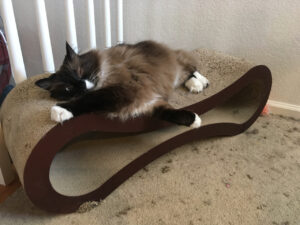
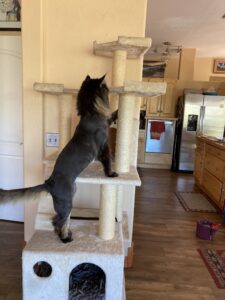 This tall cat tree is located in the interior of the house away from doors and windows. The younger cats (6 years), Zelda and Gus, use this tower to snooze on the upper levels or to get to the tops of the kitchen cabinets. Although it does meet the recommendations for the ideal scratcher, the cats don’t scratch on this tree all that much.
This tall cat tree is located in the interior of the house away from doors and windows. The younger cats (6 years), Zelda and Gus, use this tower to snooze on the upper levels or to get to the tops of the kitchen cabinets. Although it does meet the recommendations for the ideal scratcher, the cats don’t scratch on this tree all that much.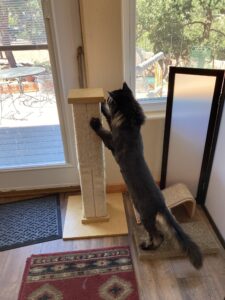 This very tall post (it is 41″) with sisal fabric is at the front door. It is popular with everyone, from the 17 lb Coon cat to the small senior at 8 lb. All four cats scratch before going out for a walk or when they sit to look out the window in the front door. The horizontal cardboard scratchers at the front door also see consistent use. The cats tend to use these with all 4 feet on the scratcher.
This very tall post (it is 41″) with sisal fabric is at the front door. It is popular with everyone, from the 17 lb Coon cat to the small senior at 8 lb. All four cats scratch before going out for a walk or when they sit to look out the window in the front door. The horizontal cardboard scratchers at the front door also see consistent use. The cats tend to use these with all 4 feet on the scratcher.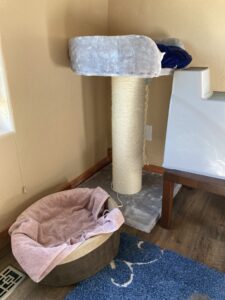 The sisal-covered base of this extra-large cat bed is tall enough for the large Maine Coon to scratch. This cat bed is located in the bedroom. It was purchased for the Maine Coon cat but has been taken over by 8 lb Athena, who sleeps in this bed or in her heated bed at the base of the scratcher. When she gets out of bed, she stretches and scratches on this scratcher. This is used infrequently by the other three cats.
The sisal-covered base of this extra-large cat bed is tall enough for the large Maine Coon to scratch. This cat bed is located in the bedroom. It was purchased for the Maine Coon cat but has been taken over by 8 lb Athena, who sleeps in this bed or in her heated bed at the base of the scratcher. When she gets out of bed, she stretches and scratches on this scratcher. This is used infrequently by the other three cats.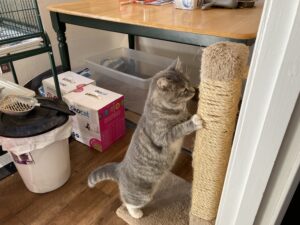

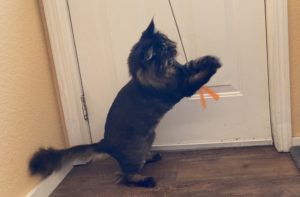

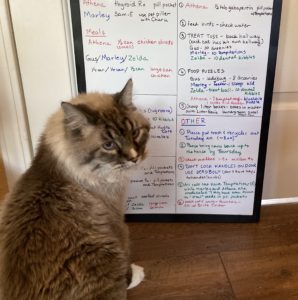
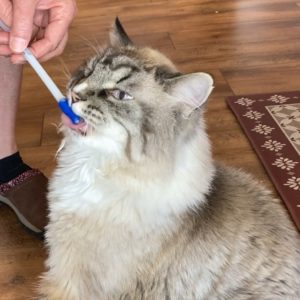 Mix up the routine from time to time – change is part of living. For example, in the medicating routine, you may wish to introduce and practice other ways of offering a pill to your cat – say with a pet piller or offering a “dummy pill” in a squeeze up treat.
Mix up the routine from time to time – change is part of living. For example, in the medicating routine, you may wish to introduce and practice other ways of offering a pill to your cat – say with a pet piller or offering a “dummy pill” in a squeeze up treat.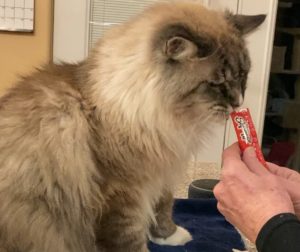
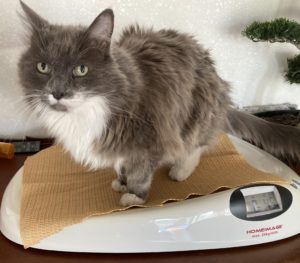
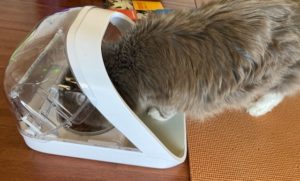
 Kitten kindergarten programs are great ways to continue to expose kittens to new experiences and accustom them to humans. But what if you can’t find one of these programs near you? Consider introducing your kitten to your friends and family in your own home.
Kitten kindergarten programs are great ways to continue to expose kittens to new experiences and accustom them to humans. But what if you can’t find one of these programs near you? Consider introducing your kitten to your friends and family in your own home.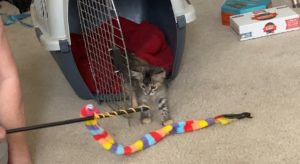 Lure your kitten out with treats or a toy. Allow her to approach people on her own – reward with a treat or play. Guests can take turns luring the kitten with toys, cuddling the kitten (if she accepts this) and offering snacks!
Lure your kitten out with treats or a toy. Allow her to approach people on her own – reward with a treat or play. Guests can take turns luring the kitten with toys, cuddling the kitten (if she accepts this) and offering snacks!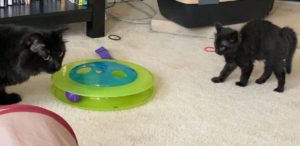
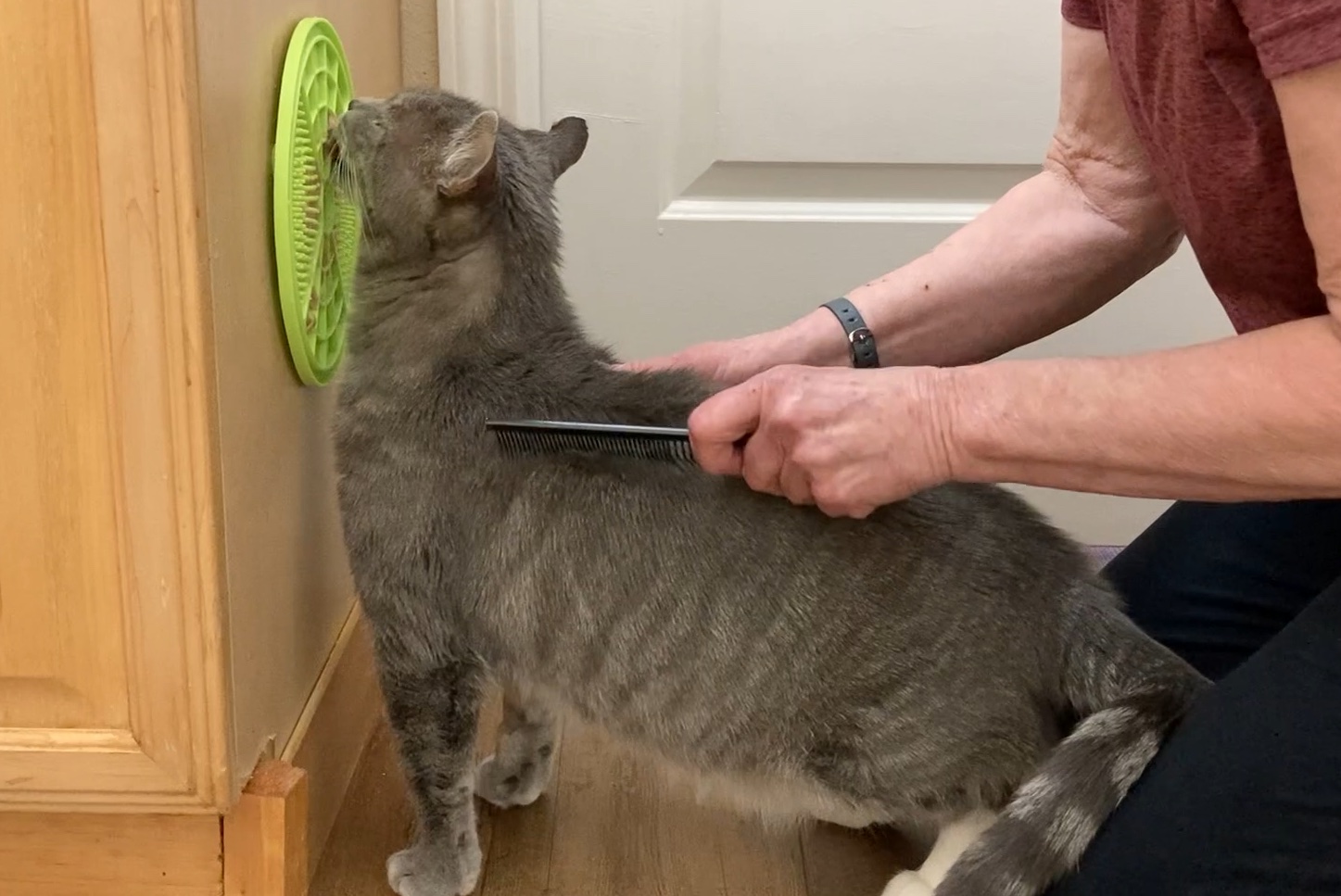
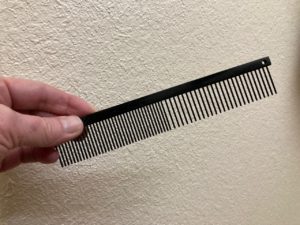
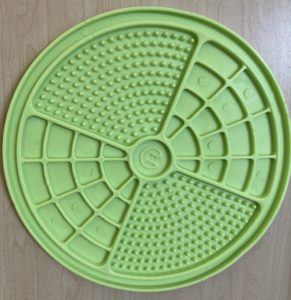
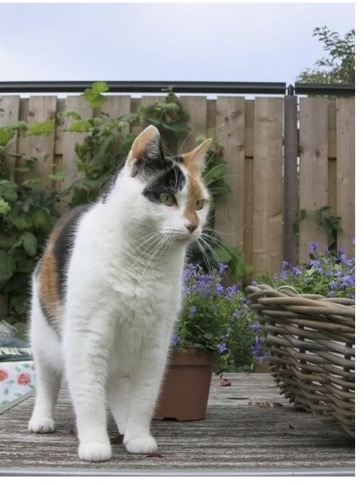
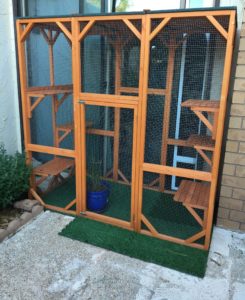
 cat on a morning or afternoon walk in your backyard or neighborhood. After all, getting outdoors is good for us too! It never hurts to have your cat harnessed even in a fenced backyard – this way you can clip the leash on as needed. If you walk your cat in public places, make sure to have kitty in a harness with leash and have a mobile “outdoor safe place” – stroller or backpack – with you.
cat on a morning or afternoon walk in your backyard or neighborhood. After all, getting outdoors is good for us too! It never hurts to have your cat harnessed even in a fenced backyard – this way you can clip the leash on as needed. If you walk your cat in public places, make sure to have kitty in a harness with leash and have a mobile “outdoor safe place” – stroller or backpack – with you.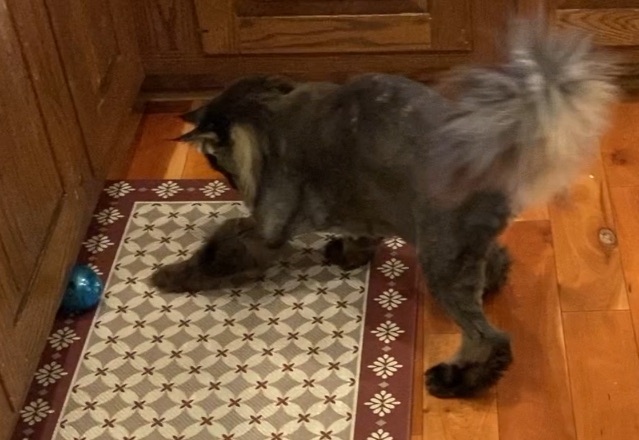
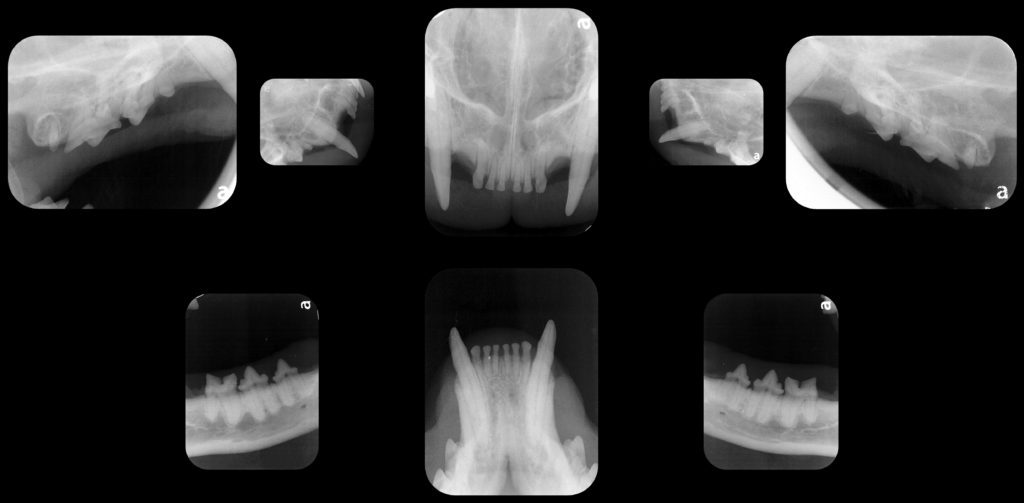
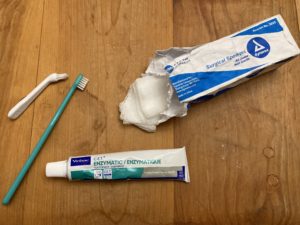
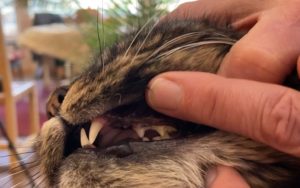 Plaque and tartar tend to accumulate on the buccal (facing the lips) side of the cat’s upper premolars. Focus on these surfaces.
Plaque and tartar tend to accumulate on the buccal (facing the lips) side of the cat’s upper premolars. Focus on these surfaces.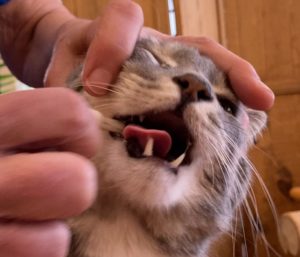 een his ears and your 4th and 5th fingers on his opposite cheekbone. Hold briefly, then reward him with a treat.
een his ears and your 4th and 5th fingers on his opposite cheekbone. Hold briefly, then reward him with a treat.